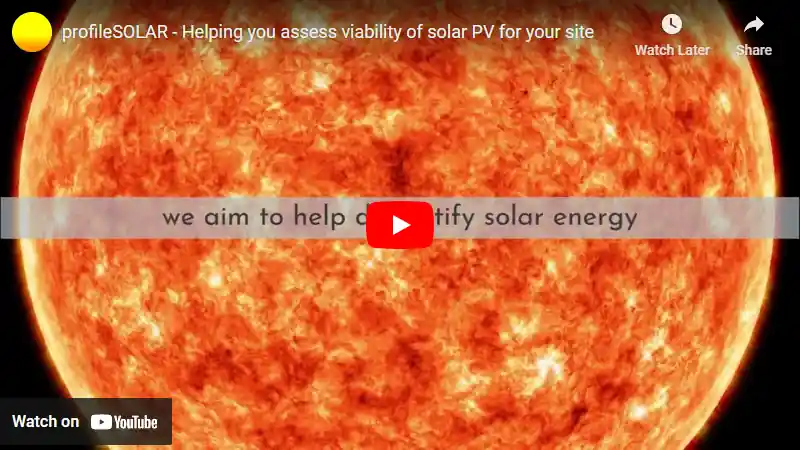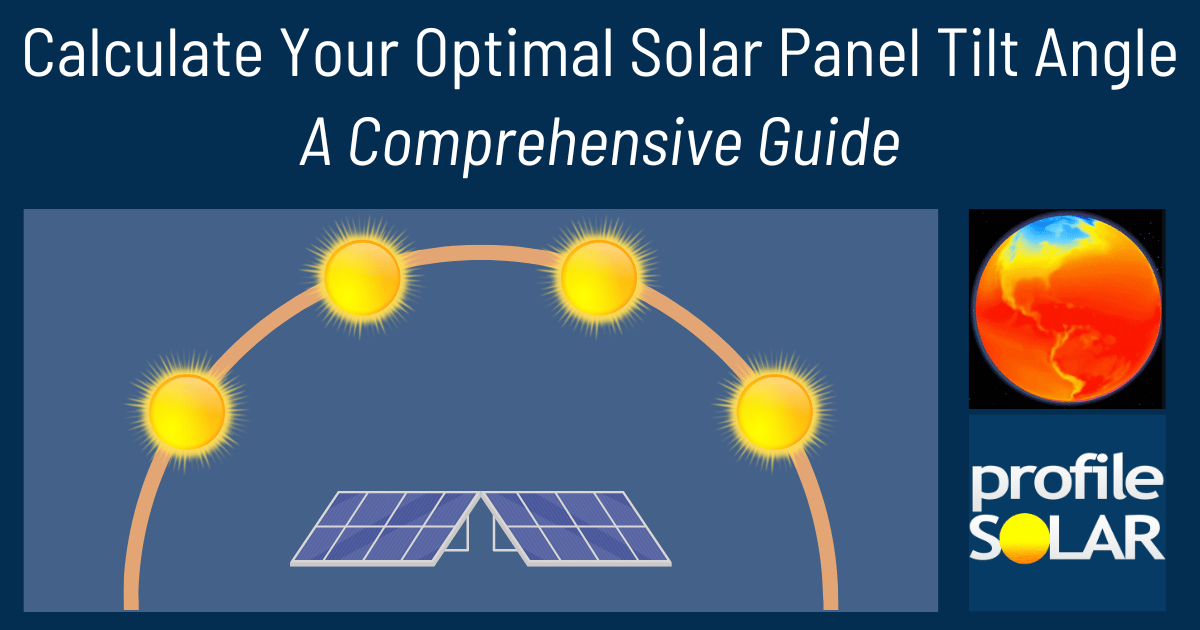

Clarksville, Tennessee is a decent location for generating solar energy throughout the year, although it's not perfect. In simple terms, the amount of electricity you can produce with solar panels varies each season.
In summer and spring, you can generate quite a bit of power - 6.49 kilowatt-hours (kWh) per day in summer and 5.67 kWh/day in spring for each kilowatt (kW) of installed solar capacity. This means that during these seasons your panels will be working hard and producing lots of energy because there's plenty of sunlight.
However, in autumn and winter the output drops to 4.15 kWh/day and 2.54 kWh/day respectively per kW installed due to shorter days and less intense sunlight.
So if you're considering when to rely most on your solar installation for power needs, spring through summer would be best at this location.
To maximize your yearly total production from these panels though, they should ideally be tilted at an angle facing 32 degrees South; this helps them catch as much sunlight as possible over the course of a year.
As far as local factors that could potentially reduce your solar production go: Clarksville does experience some cloudy weather which could block out sun rays now and then but it’s not overly significant or constant enough to drastically impact overall generation potential from your panels.
One thing to consider though is ensuring regular maintenance such as cleaning off any debris or dust that might accumulate on the panel surfaces which could block out sunlight – so keeping them clean would help ensure better performance overall.
Also remember that trees or buildings casting shadows on your panels can affect their efficiency too – so picking an unobstructed spot for installation is important if possible.
Lastly remember extreme weather events like hail storms might damage panels – while these are rare occurrences having adequate insurance coverage just in case wouldn’t hurt either!
Note: The Northern Temperate Zone extends from 35° latitude North up to 66.5° latitude.
So far, we have conducted calculations to evaluate the solar photovoltaic (PV) potential in 837 locations across the United States. This analysis provides insights into each city/location's potential for harnessing solar energy through PV installations.
Link: Solar PV potential in the United States by location
Become the exclusive sponsor for Clarksville, Tennessee, United States!
Solar output per kW of installed solar PV by season in Clarksville, Tennessee
Seasonal solar PV output for Latitude: 36.5037, Longitude: -87.2729 (Clarksville, Tennessee, United States), based on our analysis of 8760 hourly intervals of solar and meteorological data (one whole year) retrieved for that set of coordinates/location from NASA POWER (The Prediction of Worldwide Energy Resources) API:




Ideally tilt fixed solar panels 32° South in Clarksville, Tennessee, United States
To maximize your solar PV system's energy output in Clarksville, Tennessee, United States (Lat/Long 36.5037, -87.2729) throughout the year, you should tilt your panels at an angle of 32° South for fixed panel installations.
As the Earth revolves around the Sun each year, the maximum angle of elevation of the Sun varies by +/- 23.45 degrees from its equinox elevation angle for a particular latitude. Finding the exact optimal angle to maximise solar PV production throughout the year can be challenging, but with careful consideration of historical solar energy and meteorological data for a certain location, it can be done precisely.
We use our own calculation, which incorporates NASA solar and meteorological data for the exact Lat/Long coordinates, to determine the ideal tilt angle of a solar panel that will yield maximum annual solar output. We calculate the optimal angle for each day of the year, taking into account its contribution to the yearly total PV potential at that specific location.

Seasonally adjusted solar panel tilt angles for Clarksville, Tennessee, United States
If you can adjust the tilt angle of your solar PV panels, please refer to the seasonal tilt angles below for optimal solar energy production in Clarksville, Tennessee, United States. As mentioned earlier, for fixed-panel solar PV installations, it is optimal to maintain a 32° South tilt angle throughout the year.
| Overall Best Summer Angle | Overall Best Autumn Angle | Overall Best Winter Angle | Overall Best Spring Angle |
|---|---|---|---|
| 20° South in Summer | 41° South in Autumn | 52° South in Winter | 29° South in Spring |
Our recommendations take into account more than just latitude and Earth's position in its elliptical orbit around the Sun. We also incorporate historical solar and meteorological data from NASA's Prediction of Worldwide Energy Resources (POWER) API to assign a weight to each ideal angle for each day based on its historical contribution to overall solar PV potential during a specific season.
This approach allows us to provide much more accurate recommendations than relying solely on latitude, as it considers unique weather conditions in different locations sharing the same latitude worldwide.
Topography for solar PV around Clarksville, Tennessee, United States
Clarksville, located in the state of Tennessee, United States, is characterized by a relatively hilly terrain with some flat areas. The region is part of the larger Cumberland Plateau and has an average elevation of around 180 meters above sea level.
The topography consists mostly of rolling hills and valleys interspersed with streams and rivers. The soil composition varies but tends to be fertile loam. The area experiences a humid subtropical climate which brings hot summers and mild winters.
As for solar PV potential, flat or gently sloping areas would be most suitable for large-scale solar installations due to easier installation and maintenance. Areas that are not heavily forested or shaded would also be favorable to ensure maximum sunlight exposure.
In terms of specific locations near Clarksville that might be suitable for large-scale solar PV installations:
1) Farmland: There are several agricultural lands in the vicinity that could potentially host solar panels without interfering too much with farming activities (e.g., agri-voltaics).
2) Brownfield Sites: Any brownfield sites (previously developed land now vacant) could provide ample space for largescale solar PV systems.
3) Rooftops: Large commercial buildings or warehouses in industrial zones around Clarksville may offer substantial rooftop space ideal for installing photovoltaic panels.
However, it's essential to conduct a detailed site-specific assessment considering factors like local planning regulations, grid connectivity, environmental impact before setting up any large-scale renewable energy projects.
United States solar PV Stats as a country
United States ranks 2nd in the world for cumulative solar PV capacity, with 95,209 total MW's of solar PV installed. This means that 3.40% of United States's total energy as a country comes from solar PV (that's 26th in the world). Each year United States is generating 289 Watts from solar PV per capita (United States ranks 15th in the world for solar PV Watts generated per capita). [source]
Are there incentives for businesses to install solar in United States?
Yes, there are several incentives for businesses wanting to install solar energy in the United States. These include federal tax credits, state and local rebates, net metering policies, and renewable energy certificates (RECs). Additionally, many states have enacted legislation that requires utilities to purchase a certain amount of electricity from renewable sources such as solar.
Do you have more up to date information than this on incentives towards solar PV projects in United States? Please reach out to us and help us keep this information current. Thanks!
Feeling generous?

Share this with your friends!


Compare this location to others worldwide for solar PV potential
The solar PV analyses available on our website, including this one, are offered as a free service to the global community. Our aim is to provide education and aid informed decision-making regarding solar PV installations.
However, please note that these analyses are general guidance and may not meet specific project requirements. For in-depth, tailored forecasts and analysis crucial for feasibility studies or when pursuing maximum ROI from your solar projects, feel free to contact us; we offer comprehensive consulting services expressly for this purpose.
Helping you assess viability of solar PV for your site
Calculate Your Optimal Solar Panel Tilt Angle: A Comprehensive Guide
Enhance your solar panel's performance with our in-depth guide. Determine the best tilt angle using hard data, debunk common misunderstandings, and gain insight into how your specific location affects solar energy production.






